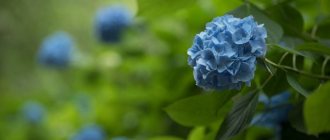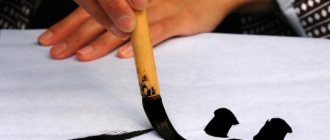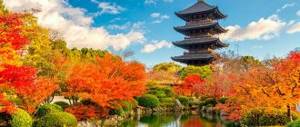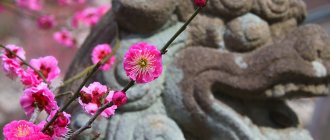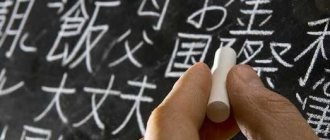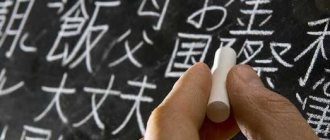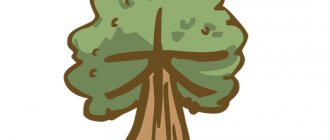Japanese lessons online
Japanese lessons via Skype, Whatsapp, Telegram
Colors
You probably already know a lot about colors in Japanese, such as akai (red) or kuroi (black). But don’t rush to close this article, because it can tell you a lot about the origin of flower names and their shades, which not all Japanese language learners have heard of.
So, let's begin:
You can divide colors into three groups according to parts of speech and their constituent words, their attachment to nouns will depend on this:
Group number 1:
The word “color” itself in Japanese sounds like iro - いろ(色), and the colors of the first group contain this word.
黄色-きいろ(kiiro) - yellow color
The first kanji 黄(ki) is yellow.
桃色-ももいろ(momoiro) - pink color
桃(momo)- peach. Another version of “pink” is the English word pink, read in the Japanese manner, that is, ピンク(pinku).
灰色-はいいろ(haiiro) - gray color
From the word 灰 (hai) - ashes, dust.
水色-みずいろ(mizuiro) - light blue color
Which is quite logical, because 水(mizu) is water.
橙色-だいだいいろ(daidaiiro) - orange color
橙(daidai) - bitter orange. And this word also has an English analogue, which is very often used in Japan, this is the known orange and its Japanese version - オレンジ (orenji).
茶色-ちゃいろ(chairo) - brown color
It’s very easy to remember, because 茶(cha) is tea.
Group number 2:
But not all colors contain the word 色(iro)color. There is a group of colors that not only have the form of a noun (for example, ao), but also the form of an adjective with i - aoi (for detailed information about adjectives, see the special lesson).
These colors include:
赤・赤い - あか・あかい(aka/akai) - red color
青・青い - あお・あおい(ao/aoi) ― blue/green color
Don't forget the borrowed version of blue - ブリュ (buryu).
白・白い - しろ・しろい(shiro/shiroi) - white color
黒・黒い - くろ・くろい(kuro/kuroi) - black color
Or its English version - ブラック (burakku) from black.
Group number 3:
And two more colors that are nouns and do not contain the word iro:
緑 - みどり(midori) - green color
紫 - むらさき(murasaki) - purple color
Don't forget the loanword for purple パープル (pa-puru) - purple
So how do you add them to nouns?
Can't we just assign all the colors to the noun directly? For example, murasaki kasa (umbrella). NO!
And I'll explain why. The colors in the first and third groups are nouns, not adjectives. And their direct use with another noun will not make any more sense than the phrase “monkey tractor.”
To add colors from the first and third
groups to a particular word, we must use the particle の(no):
茶色(ちゃいろ)の靴(くつ) - chairo no kutsu – brown shoes
茶色(ちゃいろ)靴(くつ) - chairo kutsu - brown color shoes
紫(むらさき)の傘(かさ) - murasaki no kasa – purple umbrella
紫傘(むらさきかさ) - murasaki kasa - purple umbrella
In order to use colors from the second group, it is enough to use their adjective form (that is, with the ending i, for example, akai) and directly add them to nouns:
赤(あか)いりんご - akai ringo - red apple
黒(くろ)い猫(ねこ) - kuroi neko - black cat
Since akai, kuroi are adjectives, we do not need additional particles to connect them with nouns.
After learning new material, always try to create your own examples of sentences and phrases. Show your imagination, practice, because this is the best way to remember new material and make it “active”, that is, ready for use in a real conversation.
Author: Anna Zarovskaya (yaponskii.com)
Japanese colors. Flower names in Japanese
Today's article will be about colors in Japanese . From the very beginning, I would like to note that the Japanese perception of color is significantly different from ours. In Japan, there are believed to be four primary colors:
1)Black 黒/黒い (kuro/kuroi)
2)White 白/白い (shiro/shiroi)
3)Red 赤/赤い (aka/akai)
4) Blue 青/青い (ao/aoi)
This group of colors has both a noun form and a predicative adjective form (い adjective). To add one of these colors to a noun
, you must use the い-form:
赤い
ボール(akai bo:ru) – red ball
黒い
ペン(kuroi pen) – black pen.
白い
車が好きです。(shiroi kuruma ga suki desu) – I love white cars.
In these examples, colors acted as predicative adjectives.
白が好きです。 (shiro ga suki desu) – I love the color white. In this example, 白(shiro) is a noun.
The remaining colors, according to the Japanese, are shades of the four above. All these numerous shades usually have some kind of descriptive name, that is, almost all of them are associated with Japanese plants or natural phenomena. Such colors are formed by adding to a noun that has a characteristic color, the words 色 (Iro) “color”, “color”.
Tea茶(cha)+ color色 (iro) = Brown茶色 (chairo)
Sakura桜(sakura) +color色 (iro) = Pale pink桜色(sakurairo)
Water水 (mizu) + color色 (iro) = Light blue水色 (mizuiro)
In some cases the word 色 can be omitted, for example:
紫(Murasaki) Purple
緑(Midori) Green
There are also colors borrowed from English , the most commonly used:
ピンク(pinku) pink
オレンジ(orenji) orange
ブラック (burakku) Black
パープル (pa:puru) Purple
Since the colors in this group are nouns, to add them to another noun you need to use the particle の:
茶色の
かばん(chairo no kaban) Brown bag
ピンクの
バス(pinku no basu) Pink bus
緑の
ノート (midori no no:to) Green notebook
Shades of colors can also be formed using words:
濃い (koi) - thick, dark. 濃い赤 (koi aka) Dark red.
薄い (usui) – thin. 薄い赤(usui aka) Light red
真(shin/ma) – true. Used to create extremely pronounced colors, for example: 真っ黒 (makkuro) – jet black.
Let's repeat what we covered:
- これは赤いはなです。(Kore wa akai hana desu) This is a red flower.
- Kuroi fuku ga suki ja nai I don't like black clothes.
- (Orenji no suka:to ga hoshi: desu) I want an orange skirt.
- (Anata wa sono kiiro no sukaato ga suki desu ka) Do you like that yellow skirt?
- 私は緑のズボンが大好きです。(Watashi wa midori no zubon ga daisuki desu) I like green pants.
- I can't stand light blue.
Well, did you manage to remember new words on the topic “colors”? If it doesn’t work out the first time, don’t be discouraged: there are several very true and effective techniques for memorizing words.
However, my subscribers are increasingly asking: how to expand your vocabulary? And preferably in words that will be useful in practice! We recommend that you take the free course Memorize 400 words in 21 days, as well as a year's training in Japanese for beginners in three steps.
We recommend:
Hiragana
Below is a table with the Japanese alphabet Hiragana (the same alphabet as above, only with animation characters from Studio Ghibli) and information on the order in which to learn the Japanese alphabet.
Next to each Japanese sign, its pronunciation in Russian is written. Our advice is to learn the signs in rows. First A-I-U-E-O, then the next row KA-KI-KU-KE-KO and so on. Remember signs within a specific series
(in our
vertical
) is simpler and more effective.
Learn two or three rows at a time. First
, write them down,
then
practice memorizing them using the cards. Once you get the hang of it, move on to the next two or three rows. Our summary plate is also always helpful.
And before you start learning signs, below (after the table) read a few comments regarding Japanese phonetics and recommendations for correct pronunciation^^
Pronouncing sounds correctly is very important! Work on the correctness and beauty of your Japanese pronunciation.
The success of your communication with native speakers will depend on the correct pronunciation of Japanese sounds.
Greetings, friends. Igor Korotkov is with you and today we will talk about why the traffic light is blue and not green, because when you look in a textbook or in a dictionary, the “green” color will be midori, not ao. And in general, I want to discuss colors in Japanese with you.
Every person on this planet perceives color a little differently. And the Japanese also felt color a little differently. I'm talking specifically about the worldview of color.
Imagine that in ancient Japan all colors were divided into 4 spectrums: White - Shiro (白), black - Kuro (黒), red - Aka (赤), i.e. something warm, and everything else was Ao (青) - that’s what cold colors were called. You may even remember words that are very similar to these 4 colors. For example, KURAI - dark, KURAIami - darkness, AKArui - light, SIRAMU - to lighten (about the sky), etc.
Let's start with the word aoi, because... This color is the most mysterious of all and a lot of confusion is created around it. You might have seen this translation when you looked at the textbook: “Blue, light blue, green, pale.”
And, probably, you were in shock, because you had to remember colors that were in no way related to each other. To put it very simply, then roughly speaking, Aoi should be remembered as “blue”, and not “green” or “pale”.
Looking into Japanese explanatory dictionaries, you will again be horrified, because it is written there that the color aoi means not only the blue sea or blue sky, but also the color of unripe fruits or vegetables, i.e. "green". Also, the traffic light will also be Aoi. It is also a symbol of youth. Plus, if we say that you have a blue face, then it translates as a pale face. Those. Kao ga Aoi (顔が青い).
Here I want to bring a little clarity to what is happening. Those 4 spectra that we talked about earlier existed before the Europeanization of Japan and even before the characters from China with new colors began to penetrate into the Japanese language. Those. after the penetration of Chinese characters, the colors began to be complemented. Now, the color green has its own word, you guessed it, Midori (緑). Other flowers also had their own words.
But I want to note that Aoi still has the property of green, pale color or youth in stable rotation. As I already said, for example: “pale face” - Kao Ga Aoi 顔が青い, or “unripe green apples” - Aoi Ringo あおいりんご.
Instead of apples, there may be, for example, unripe vegetables Aoi Yasai (あおいやさい), young (green) foliage - (Aoba 青葉), Seishun (青春) - youth.
By the way, despite the fact that Japanese developed its own colors that can be said in Japanese, borrowed words were also taken. For example, in Japanese there is not only Midori, but also Gurin (グリーン) from Green. Blue also got Buru (ブルー) from Blue, and gray, in addition to Nezumi Iro, also got Gure (グレー) from Gray.
How then to use all this abundance of flowers? Should I say Gurin or Midori? Buru or Aoi? Here I will say one statement that I heard about 8 years ago and with this statement I partially agree.
Something natural and living is called in Japanese, and something artificial or exotic is called with borrowed words such as buru, gurin, etc. Of course, this statement also has its own small contradictions, for example: there is Midori no Mado Guchi みどりの窓口 - the so-called. the “green window” where they buy tickets, and there is Gurin xia グリーン車 - “green car” - this is a high-class car, for example, on trains. These are from the same industry and things are related, but the colors are still called differently there. In part, I still share this point of view, because... According to my observations, there is logic in this. And the specific designation of an object or object with color will only come with practice.
Nowadays the Japanese have such a huge variety of colors in their language that you can go crazy. For example, pink not only has ピンク from the word Pink, but also Sakura Iro さくらいろ and Momo ももいろ (peach color). Not only that, all these 3 colors are different!
Here is momo iro, here is sakura iro, and here is pinku. Depending on the calibration of your monitor, colors may vary slightly, but you can still see the difference. Sakura iro is a more faded, subtle color. Pinku is the same as regular pink. And momo iro is a little more rich. All these are different colors and if anyone wants to argue, I will simply refer you to the Japanese JIS classifiers (this is Japan Industrial Standards). You can clearly see the difference in any graphics editor. Just enter this code.
Do you think this is only the case with pink? No! The Japanese have very detailed color gradation. For example, in addition to Aoi or Buru, they also have Mizu iro 水色, literally translated as “color of water,” i.e. you could say it's a "light blue". It's a different color too!
And here you can say: “come on, they don’t say that.” And I want to object, as they say! I have heard the word Sakura iro or Pinku many times. I also heard the word mizuiro from ordinary people. How then would I know about them? When I was learning Japanese, I never specifically scoured dictionaries to find out this or that color; everything came from the Japanese themselves or from the media, i.e. all these colors are used in one way or another to emphasize exactly the shade that is needed.
Here’s something else I remembered, there is such a stable expression as 青い太陽, the so-called. “setting sun”, the group Sekai no Owari also has a song with the same name. Or the name of the prefecture “Aomori” - literally translated, of course, not as “blue forest”, but “green forest”.
Now let's talk about the “blue traffic light” in Japan. Why is the color of a traffic light called blue あおしんごう, and not green みどりしんごう? The first traffic light made in the United States was installed in the Hibiya area of Tokyo in 1930. This is where the emperor's residence is now located. Why is it still blue? After all, by that time there had long been such words as Midori, etc., but as we remember, Aoi remained only in established expressions, and this is a new technique and there is no talk of any established expressions.
It’s just that people called him Aoi, and this became a new stable expression. Initially, even in legislation, the green signal was exactly like midori shingo, but after, because of the people who nicknamed it aosingo, midori shingo was renamed to aosingo by law in 1947. Interestingly, blue and green are combined into one color not only in Japan, there is a whole article on this on the wiki.
Please also note that after the colors in Japanese began to be complemented, they began to combine not just a color, but the color of some object serves as a root, for example, brown became not just brown, but the “color of tea”, i.e. .e. – Cha Iro 茶色, shades of gray became “mouse color” ねずみ色 or “ash color” 灰色 – Nezumi iro and Hai iro, respectively. And so on.
I won’t rant too much about the variety of colors, let’s go through 3 more colors that you definitely need to know in addition to those we went through earlier. Perhaps this is Kiiro 黄色 - yellow and Murasaki 紫 - purple. Of the borrowed ones, you can also add Orenji オレンジ – orange, because. most often they use “orenji no 〜” something there, and not its Japanese counterpart.
I’ll immediately warn you of one more possible question in the comments: what is the difference between Aka and Akai, Ao and Aoi, etc.? Akai is a predicative adjective, i.e. is an adjective starting with I, and Aka is a noun. That's all.
What are the names of colors in Japanese and the perception of colors by the Japanese?
When the first street traffic lights appeared in Japan, the signals were red, yellow and blue. Then it turned out that a green beam is much more visible at a great distance than a blue beam. Therefore, the blue lenses of traffic lights were gradually replaced with green ones. But the custom of calling the signal allowing movement “blue” remains.
“The most surprising thing, of course, concerns the adjectives that describe color, namely green and blue. It turns out that green apples in Japan are not called green, but blue. Yes, yes - not “midori” (green), but “aoi” (blue)! Just like the green traffic light in Japan is not green, but blue. Or rather, at the traffic light everything lights up as expected - red, yellow, green. But the Japanese call it blue (although they know very well that this color is green). Both the first green grass and the first leaves on the trees will also be called blue. This is a kind of Japanese color blindness.
There are a lot of explanations for him, but no one knows which is correct. The fact is that the Japanese somehow don’t think much about it, and when you ask them to explain the reason for such a vision of the green color, they fall into a slight stupor. Many Japanese believe that the blue color is associated in Japan with something fresh, new, first . That is why the first grass, the first leaves, unripe apples are called blue. Perhaps so, but what does the traffic light have to do with this? It would be more logical then to call the red signal blue - it seems immature, you can’t go yet.
It's just that historically the Japanese considered green to be a shade of blue. For example, the Chinese character for the color blue青(pronounced ao) consists of two characters iki (life) and i (pond, well) and refers to the color of the plants that grew around the pond, i.e. color between green and blue. When the Chinese saw this character, they said it meant “green,” and the Japanese said it meant “blue.” The Japanese color book states that there are four tertiary colors: red, blue, white and black, and all other colors are shades of these four. The character Ao, however, is a kind of perfect blue, halfway between green and blue. The sky is considered blue, but blue is a hue, just like traffic lights. the leaves of trees are considered green, but green is also a shade of ao, just as crimson is considered a shade of red. Another interesting feature of the different understanding of colors is that Japanese children always draw the sun as red rather than yellow.
